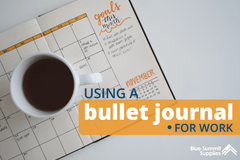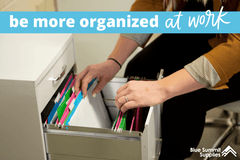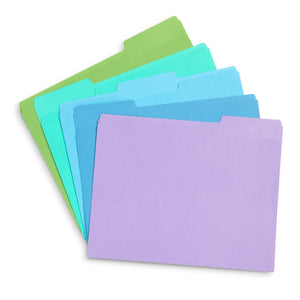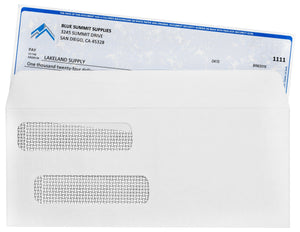Meetings are an unavoidable aspect of office life, whether you're remote or in-office. And, unfortunately, they're very rarely the highlight of anyone's schedule. So how do you make yourself, or the team you’re leading, not dread having a weekly meeting?
At Blue Summit Supplies, we're not stranger to meetings and we’re here to guide you on everything you need to have a successful meeting. We'll cover everything from what time you should meet, to the order things are done, what should be talked about, and even how to make time for non-work talk to end the meeting on a high or funny note.
It may not make things exciting or the highlight of your week, but hopefully it makes it so you and the other members of your group in the meeting don’t dread them.
Pre-Planning for Your Weekly Team Meeting
Whether it's just checking in on your team or a big quarterly meeting that determines your company’s plan going forward, it’s important to plan ahead for your meeting. If you’re ill-prepared, that’s how the meeting becomes a mess and ends up going 15 different directions and everyone leaves even more confused than they were before the meeting. So how do you get prepared for the meeting? Here are some things we do at Blue Summit Supplies.

Set A Time
For a weekly meeting, it’s important to have a set time every week so that the participants in the meeting aren’t surprised when it happens, and it gives you and those in the meeting a chance to prepare mentally. The trick is finding a time that isn’t too obtrusive to everyone’s schedule, so probably not first thing Monday morning when everyone gets in and is getting caught up after the weekend, but also not something around lunchtime or right before the day ends when everyone is mentally checked out and ready to go home. Aim for something that’s either mid-morning, roughly 10:30am, or mid-afternoon, 1pm to 1:30ish, so people don’t feel rushed and still have time to get back to their desk after for their main work for the day.

Set A Time Limit
You don’t want an open-ended meeting, where what you thought might take a half hour ends up taking nearly an hour or longer. And this may be something you figure out as you have a few meetings, so initially, set your meeting time for longer than you may think you need. If you start your meeting times at an hour and find out that your first 3-4 meetings end up only taking about 25 minutes, then you know going forward to set your meeting time for a half hour. But, be sure to err on the side of caution for the scheduled meeting length, because you would rather have the meeting go short and leave your extra time, than it run long and you’re suddenly scrambling to try and figure out the rest of your day.
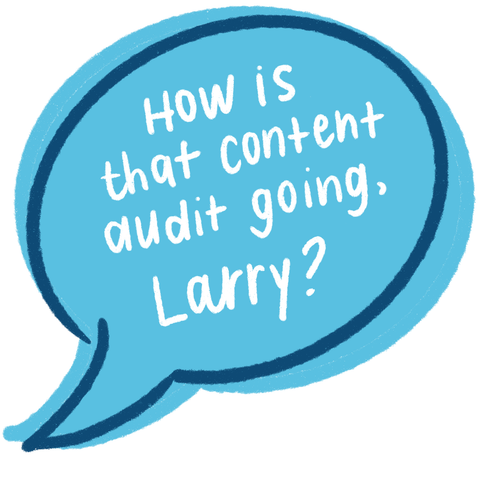
Know Your Team’s Schedule or Plans for the Week
Now, this doesn’t mean that you have to know every last thing that your team members have going, but prior to the meeting, if your staff has something like Asana, or any other workday planning software you can see what the rest of the team has on their plate for the rest of the week, and then during the meeting you are able to ask questions about what that task might need, or how long it’s going to take.
Tips for Effective Team Meetings
So everyone has gathered for the meeting, and it’s set to start, but how do you make sure the meeting is informative, informational, and maybe even fun, right from the start?

Get Everyone Involved
Yes, speaking in public or in front of a group of people can be terrifying for some people, but if at the start of the meeting you go around the table and just ask everyone how they’re doing, or how the weekend was, something simple, it helps loosen everyone up, and make them more likely to talk when the meeting gets down to work things. And the same goes for when the discussion turns to work or what everyone has on their schedule for the week. Go one by one to each person, give them a chance in their own words to explain what they’re working on, how they plan to go about it, and how long it will take. Even if it’s not a super deep explanation or lacks details, it gets everyone involved.

Get to “Work Talk” Early
It’s not the most exciting thing to talk about, but it is the whole reason this meeting was called in the first place. Plus, if it’s a longer meeting, where your attention may wane as you get deeper into it, getting the most important parts out of the way early means more people are paying attention. Also, if there’s no small-talk or other interruptions early on, it means you may be done earlier with the meeting, and that’s something that nobody has every complained about.

If There’s Time, Allow Small Talk at the End
So you got through everything you needed to do and cover during the meeting and it only took 20 of the allotted 30 minutes you had scheduled. Great! Now, you could just run back to your desk, put your headphones on and get back to work (or checking Facebook for memes), but you could also just sit and talk with your team. Maybe someone had a funny thing happen to them over the weekend, or you went to an amazing restaurant, or took a trip somewhere and people want to hear about it. That’s great! You should talk about that, and doing so at the end of the meeting let’s the group unwind, while also getting closer, because they feel comfortable sharing things that happen to them outside work.

Team Meeting Template
If you’re unsure about how to organize or setup your meeting, here’s a quick list of things we do at Blue Summit Supplies for our meetings:
- Introductions/Check In – Just ask how everyone is doing, or how their day is going.
- Meeting leader (Shannon in our case) updates everyone on what they have on their plate for the week ahead – This is handy so the rest of the team knows how much bandwidth your department leader may have to help on things later in the week.
- Team Members Share Their Plans – Our group typically go around the table explaining what they’ve done, or what they have on their plate for the rest of the week, while also letting other team members know if they’ll need their help on something.
- Ask Questions/Provide Other Updates – Unsure on when a project needs to be done, or where to get the resources you need, this is the time to ask about it. Or if you have something planned for later in the week (Say you need a half day on Thursday to go to the Doctor), let people know so they aren’t surprised by it, and know to adjust their schedule or tasks for you.
- Final Work Things – Just one last chance to talk about anything that may pop up. You can literally ask, “Does anyone have anything else they want to ask or talk about?” Because let’s be honest, sometimes we forget things and they just happen to pop into our heads later on.
- (Time Permitting) Make Small Talk – Again, if you have time because the meeting went shorter than you thought it would, there’s nothing wrong with taking the remaining 5-10 minutes and talking about things that aren’t work.
 |
Click here to download our free weekly team meeting agenda temeplate! |
Tips to be More Focused in Meetings
We know it can be hard to focus in meetings, but there are ways to help with that, and to help you remember what was discussed in them, and they’re really simple things that don’t require a ton of extra effort or time.

Bring a Notepad With You
This allows you to take notes, so if someone mentions a project or thing to look into, you can write it down. You’re more likely to remember things when you write them down, so taking notes during a meeting is a very simple way for you to stay engaged.

Ask Questions
If something gets brought up in the meeting, don’t be the person who right after it ends, sends an email asking how to do something, or what it means. Ask those questions right then and there. It’s much easier to get an explanation, and a more clear one too, when you ask the question and get the answer in person.

Eat Before Your Meeting
This will sound odd, but if you’re hungry going into the meeting, you’ll be focused more on food and how hungry you are. Also, if you have lunch DURING the meeting, you’ll be more focused on eating and making sure you don’t spill all over the table than what’s actually going on in the meeting.
And there you go! With these tips, not only will you be able to run an affective meeting, but you may also become a more effective, and attentive member of your meeting. Of course, none of these are hard and fast rules, so feel free to tweak what works and what doesn’t work for you and your meeting group.
 For more informative articles about office supplies, subscribe to our email newsletter!
For more informative articles about office supplies, subscribe to our email newsletter!
Never fear, you won't begin receiving daily sales emails that belong in a spam folder. Instead, we promise a fun weekly roundup of our latest blog posts and great finds from across the web. And if you lose interest, it's always easy to unsubscribe with a single click.




